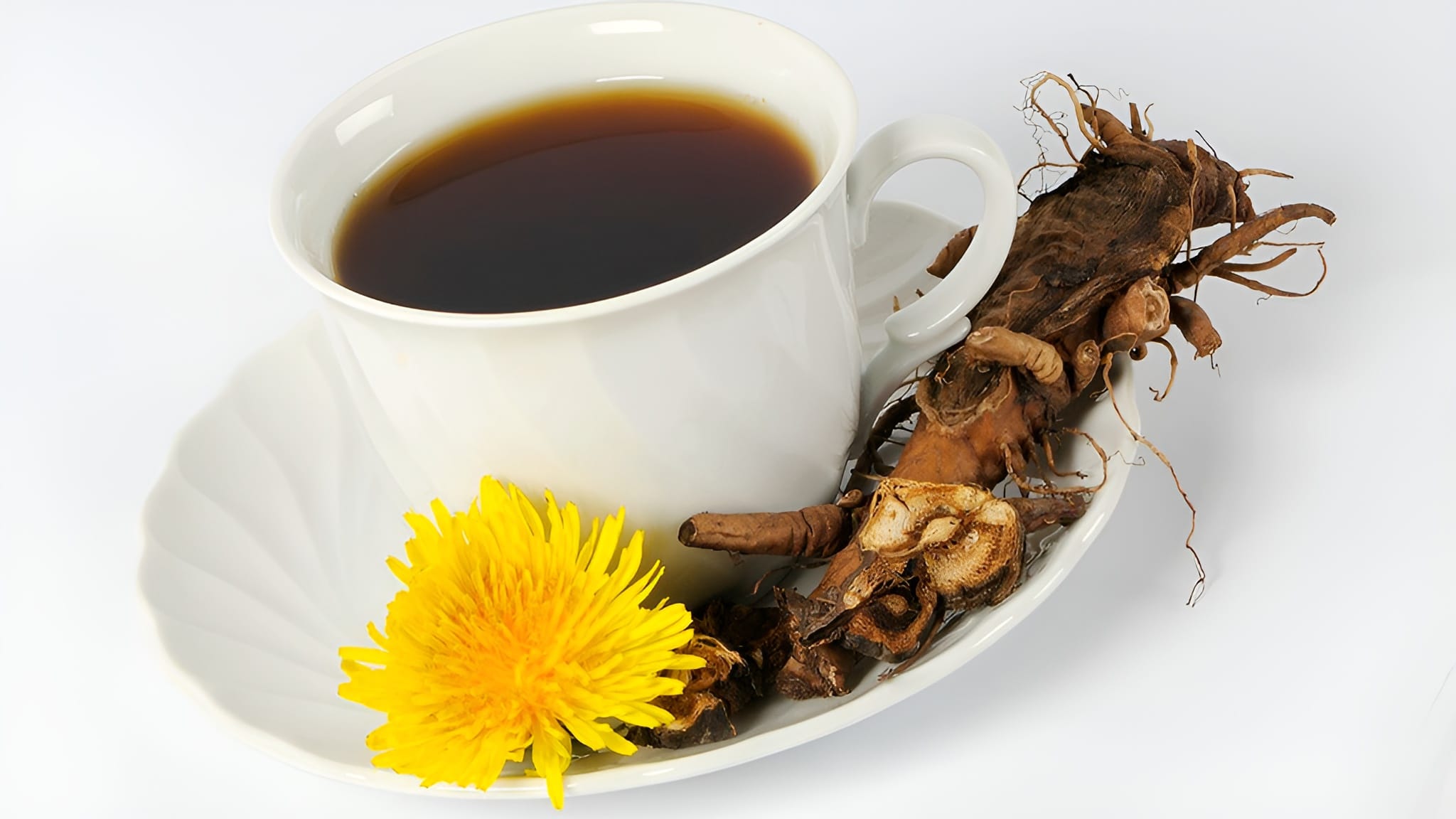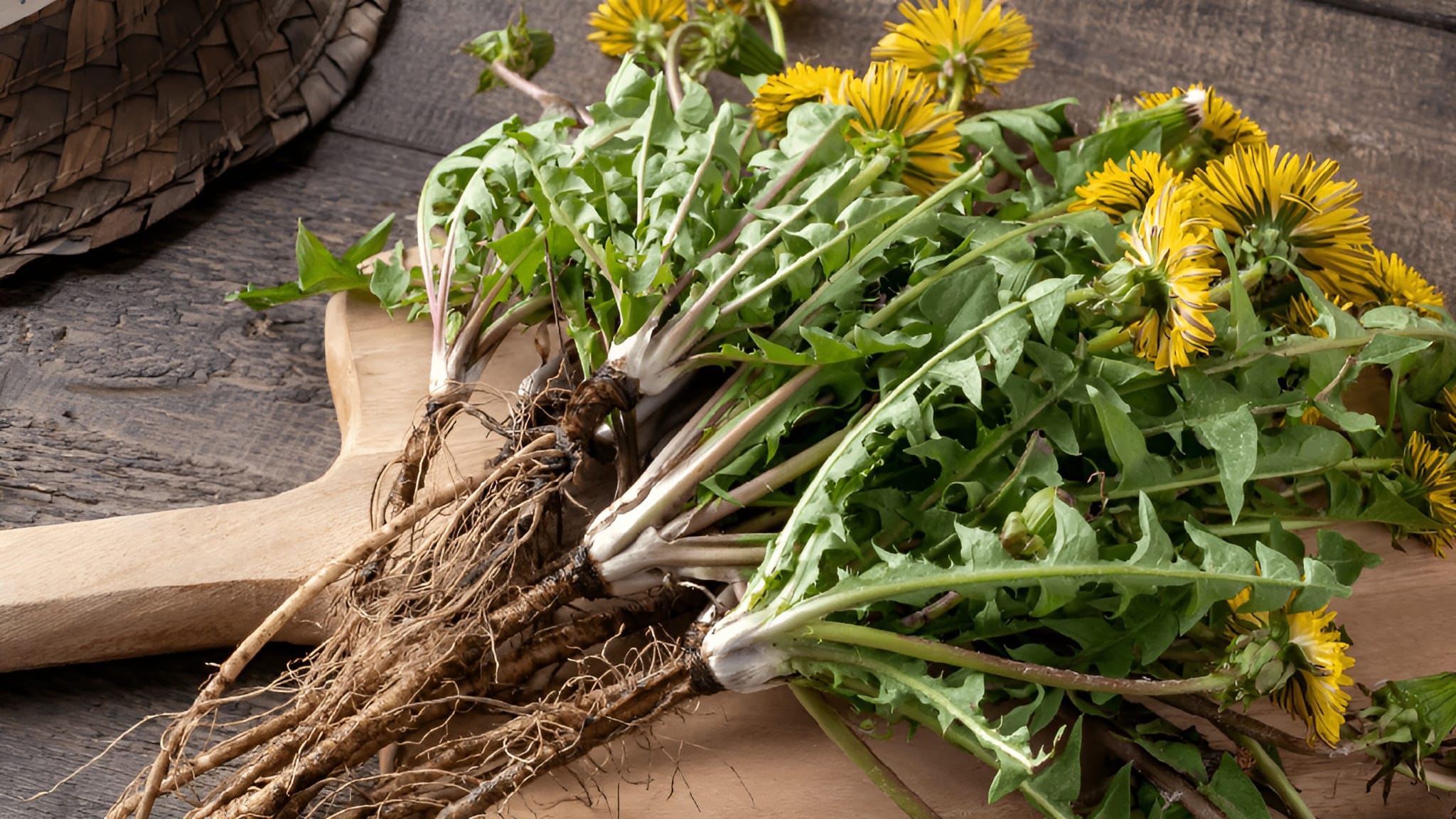Dandelion tea is one of my personal favorite beverages, and for good reason! It’s not only incredibly hydrating and packed with nutrients, but it also offers a wide range of health benefits that can truly enhance your well-being.
Dandelion tea is known to help lower blood pressure, support kidney function, improve liver health, and aid in detoxification [1][2]. While there are many ways to enjoy dandelion tea, roasted dandelion root tea has become increasingly popular in recent years, and for good reason.
Table of Contents
Why Choose Roasted Dandelion Root Tea?
Many people are drawn to roasted dandelion root tea because it offers a delicious and healthy alternative to coffee. But the appeal goes beyond just the taste.
- Coffee-Like Flavor Without the Caffeine: Roasting the dandelion root gives it a rich, robust flavor that many find similar to coffee, but without the caffeine jitters or energy crashes. This makes it a perfect choice for those who love the taste of coffee but are sensitive to caffeine or prefer to avoid it altogether.
- Natural Diuretic: Like coffee, dandelion root is a natural diuretic, meaning it helps flush out excess fluids from the body. This can be beneficial for reducing bloating, supporting kidney health, and even aiding in weight loss. However, unlike coffee, which can raise blood pressure and heart rate, dandelion root has the opposite effect—it actually helps lower blood pressure [3][4]. This makes it a heart-healthy alternative for those looking to reduce their caffeine intake.
- If you’d rather not prepare tea every day, a supplement that blends milk thistle + dandelion, done for you can provide similar liver and detox benefits in an easy capsule form.
If you’re looking for a healthier way to enjoy your morning cuppa or an afternoon pick-me-up, roasted dandelion root tea is an excellent choice. It provides a satisfying taste while offering numerous health benefits.
Is Roasted Dandelion Root Tea Different?
Essentially, roasted dandelion root tea benefits are very similar to those of regular dandelion tea, which is made from the leaves and flowers of the plant. However, roasting the root enhances the flavor, giving it a deeper, more robust taste that many find reminiscent of coffee. Roasting also increases the shelf life of the dandelion root, as the process removes much of the moisture, making it less prone to spoilage.
How to Make Roasted Dandelion Root Tea at Home
Making your own roasted dandelion root tea is surprisingly easy and rewarding! Here’s a step-by-step guide to help you get started:
- Harvesting: Dandelions are incredibly common and can be found in many yards, fields, and parks. Just be sure to harvest them from a location that hasn’t been treated with pesticides or herbicides. Look for healthy plants with vibrant green leaves and bright yellow flowers.
- Cleaning and Drying: Gently dig up the dandelion plant, ensuring you get the entire root. Wash the root thoroughly to remove any dirt or debris, and then cut it into small pieces, about 1/2 inch thick. You can dry the root pieces in a dehydrator or by spreading them out in a well-ventilated area until they are completely dry and brittle. This may take several days, depending on the humidity and temperature.
- Roasting: Once the roots are completely dry, it’s time to roast them. This can be done in an oven or on a pan over medium heat. If using an oven, preheat it to 350°F (175°C) and spread the root pieces in a single layer on a baking sheet. Roast for about 10-15 minutes, or until the roots turn a rich, coffee-like color. If roasting on a pan, heat the pan over medium heat and stir the root pieces frequently to prevent burning.
- Storage: Once the roasted dandelion root has cooled, store it in an airtight container in a cool, dark place. It can last for over a year if stored properly, giving you a plentiful supply of this healthy and delicious tea.
Experience the Benefits of Roasted Dandelion Root
Roasted dandelion root tea is a delicious and healthy beverage that offers a wealth of benefits. It’s a fantastic coffee alternative, supports detoxification, aids in digestion, and provides numerous nutrients. Plus, it’s easy and affordable to make at home!
Many people also pair dandelion tea with turmeric for a healthy inflammatory response, creating a powerful daily herbal stack for whole-body wellness
FAQ
Yes. “Regular” tea often uses leaves/flowers; roasted root is caffeine-free with a deeper, coffee-like flavor. Benefits overlap (fluid balance, liver/kidney support), but roasting mainly changes taste and shelf life, not the core uses.
Indirectly. It’s a natural diuretic, so it can reduce temporary water retention/bloating and support sodium balance. That’s not the same as fat loss. Pair with protein, fiber, movement, and steady-glucose habits for real body-comp wins.
It may help nudge BP down by reducing fluid volume and supporting potassium intake. It’s not a replacement for prescribed BP meds—monitor at home and talk with your clinician if you’re managing hypertension.
Common: 1–3 cups/day. Brew ~1–2 tsp crushed roasted root per cup; simmer 10–15 minutes. Start small and see how you feel. Because it’s a diuretic, many people sip earlier in the day to avoid late-night bathroom trips.
If you’re pregnant/breastfeeding, have kidney issues, gallbladder/bile duct problems, or ragweed allergy, talk to your clinician first. Be cautious if you use diuretics, lithium, or potassium-sparing meds—there can be interactions.
Yes—harvest only from pesticide-free areas, scrub well, dry thoroughly, then roast to a dark, coffee-like color and store airtight. Prefer buying? Choose brands that test for contaminants and list the plant part (root).
Cites and Sources
No Citations
Show Citations
[1] - Clare, B. A., Conroy, R. S., & Spelman, K. (2009). The Diuretic Effect in Human Subjects of an Extract ofTaraxacum officinaleFolium over a Single Day. The Journal of Alternative and Complementary Medicine, 15(8), 929–934. https://doi.org/10.1089/acm.2008.0152
[2] - Cai, L., Wan, D., Yi, F., & Luan, L. (2017). Purification, Preliminary Characterization and Hepatoprotective Effects of Polysaccharides from Dandelion Root. Molecules, 22(9), 1409. https://doi.org/10.3390/molecules22091409
[3] - Arumugham, V. B., & Shahin, M. H. (2023, May 29). Therapeutic uses of diuretic agents. StatPearls - NCBI Bookshelf. https://www.ncbi.nlm.nih.gov/books/NBK557838/
[4] - FoodData Central. (n.d.-b). https://fdc.nal.usda.gov/fdc-app.html#/food-details/169226/nutrients





